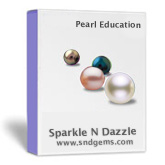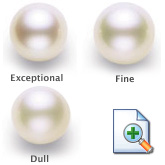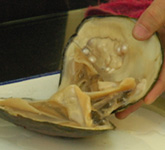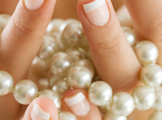

Anyone buying pearls should take time to learn to evaluate luster and, in particular, to recognize what is acceptable and what is not acceptable; in particular, when luster is too low. Luster is produced when rays of light are absorbed into and reflected back out through the nacre - the layers of calcium carbonate that make up the pearl. Luster is rated from very high to very low. In general, the thicker the nacre, the deeper the luster. Japanese pearls, in general, exhibit a higher luster than South Sea varieties that show a softer, more velvety appearance.

Pearls with a bright, intense luster sharply reflects nearby images, will have a good nacre thickness; pearls that look very dull or chalky probably have very thin nacre or poor quality nacre. Roll the pearls to view them from all sides to make sure the luster is uniform. Examine them under a light source such as fluoroscent lamp, looking for reflections of the light off the surface, paying particular attention to the brightness or sharpness of the reflections. Avoid strong, direct light. If the available light is too strong, hold your hand over the pearls to shade them, and examine in the shadowed area.

Top quality Japanese Akoya cultured pearls can have a higher luster than other white round cultured pearls because of the water temperature in which they are produced. Cold water causes slower nacre production, which normally results in superior crystallization and over-all nacre quality. When the nacre is good, and is exceptionally thick, Japanese Akoya pearls can have incredible lustrousness. The luster can also be very chalky, indicating very thin nacre, or poor quality nacre.

Of the value factors, luster is among the most important. Luster refers to the quality and quantity of light reflecting from the pearl's surface, or "brightness" of the pearl. Very high luster is a sign of fine quality nacre, and is found only in the most rare pearls that command a premium price.
![]()
Why
Buy From Us | References
| Site Security
| Guarantee | Return
Policy | Buyer's
Tips | FAQ | Site
Map
Product
Education | Live
Online Help | Search
Our Website | Customer
Service | Contact
Us | Payment Options
| Sales Tax
Shipping
Charges | Service
Center | Order
Tracking | Platinum
Facts | Ring Sizing
| Engraving Options
| Polishing
How
To Order | After
Sales Service | Legal
| Terms & Conditions
| Disclaimer | Product
Policies | Security
info@sndgems.com | © 2000 Sndgems Inc. | 1-800-871-1066 / 1-614-921-9024
